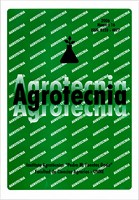Prevention of musculoskeletal pain in horticultural workers of two farms, in the province of Corrientes, Argentina
DOI:
https://doi.org/10.30972/agr.0336901Keywords:
Prevalence, musculoskeletal disorders, horticulture, prevention, interventionsAbstract
There is no previous researchwork as regards Musculoskeletal Disorders (MSD) in horticultural workers from Lavalle, Corrientes. The aims were to estimate the prevalence of MSD in the spine and shoulders, the physical effort of seedling transplant activity and the impact of preventive exercises in a population of intensive horticulture workers. A controlled and prospective clinical trial study was carried out in three groups, two intervention groups A – B, for 12 months and a comparative group, C, for 6 months. The lifetime prevalence of punctual, quaterly and annual pain in cervical spine, thoracic, lumbar and shoulders, was analyzed at the beginning, at 3, 6, 9 and 12 months in the intervention groups A and B. In group C, at the beginning, at 3 and 6 months. The most prevalent MSD was low back pain 98%, 94.3% and 66.7%, followed by dorsal pain 61.7%, 52.7% and 55.3%; cervical pain 61%, 45% and 55.3%; and, shoulders pain 54%, 40.3% and 35%, (average lifetime, annual and punctual prevalence of the 3 groups A, B and C, respectively). Once the preventive strategies were implemented, low back pain decreased by 60% and 100% in the intervention groups; 33% in the comparative, back pain, 59.8% and 100%, in the intervention groups, and 25.4% in group C, neck pain, was reduced 87%, 100% and 0%, in intervention groups A, B and control C group, respectively. Shoulder pain fell 76% in the intervention group and 34% in the comparison group C. The transplant activity was characterized as "light" and "heavy", morning and afternoon, respectively. Low back pain is the most prevalent MSD. Prevention strategies, based on the combination of training and specific physical exercises, allowed to reduce pain in intensive horticulture workers.



